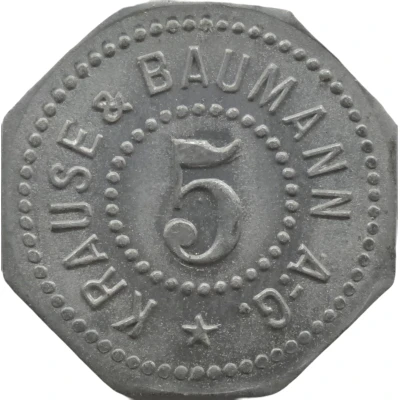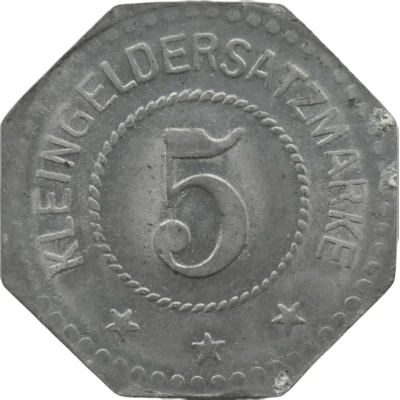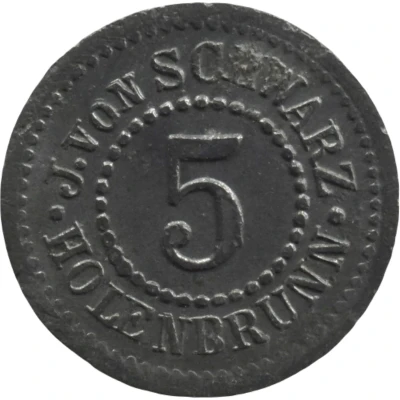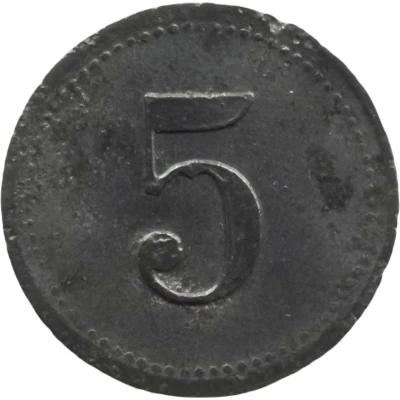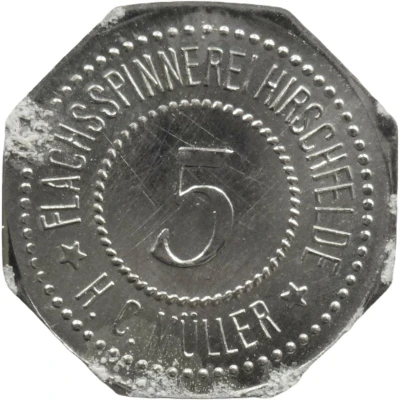
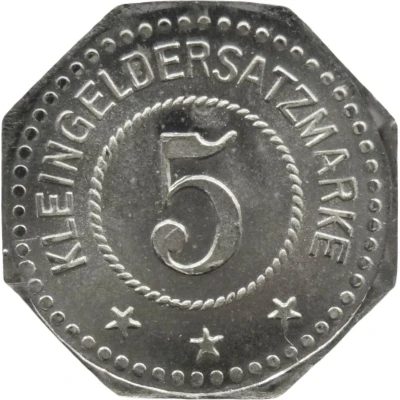

© Willem63 (CC BY-NC-SA)
5 Pfennigs - Hirschfelde (Flachsspinnerei H.C. Müller) ND
| Nickel plated zinc | 1.5 g | 19.3 mm |
| Issuer | German notgeld (Germany) |
|---|---|
| Type | Standard circulation coin |
| Value | 5 Pfennigs (5 Pfennige) (0.05) |
| Currency | Mark (1914-1924) |
| Composition | Nickel plated zinc |
| Weight | 1.5 g |
| Diameter | 19.3 mm |
| Thickness | 1.0 mm |
| Shape | Octagonal (8-sided) |
| Technique | Milled |
| Orientation | Medal alignment ↑↑ |
| Demonetized | Yes |
| Updated | 2024-10-04 |
| Numista | N#339729 |
|---|---|
| Rarity index | 97% |
Reverse
Pearl rim, legend surrounding rope circle with denomination centered
Script: Latin
Lettering:
KLEINGELDERSATZMARKE
5
★ ★ ★
Edge
Plain
Comment
Menzel: BBBInteresting fact
The 5 Pfennigs - Hirschfelde (Flachsspinnerei H.C. Müller) ND coin from German notgeld (Germany) made of Nickel plated zinc weighing 1.5 g is interesting because it was created during a time of economic turmoil in Germany, specifically during the hyperinflation period of the 1920s. The coin was part of a series of emergency coins minted by local authorities, known as "Notgeld," which translates to "emergency money" in English. These coins were used as a temporary solution to address the shortage of official currency and were often made from materials like zinc, aluminum, or even porcelain. The fact that this coin was made of nickel-plated zinc and weighs 1.5 grams is a testament to the resourcefulness and creativity of the people who created it during a time of economic hardship.
